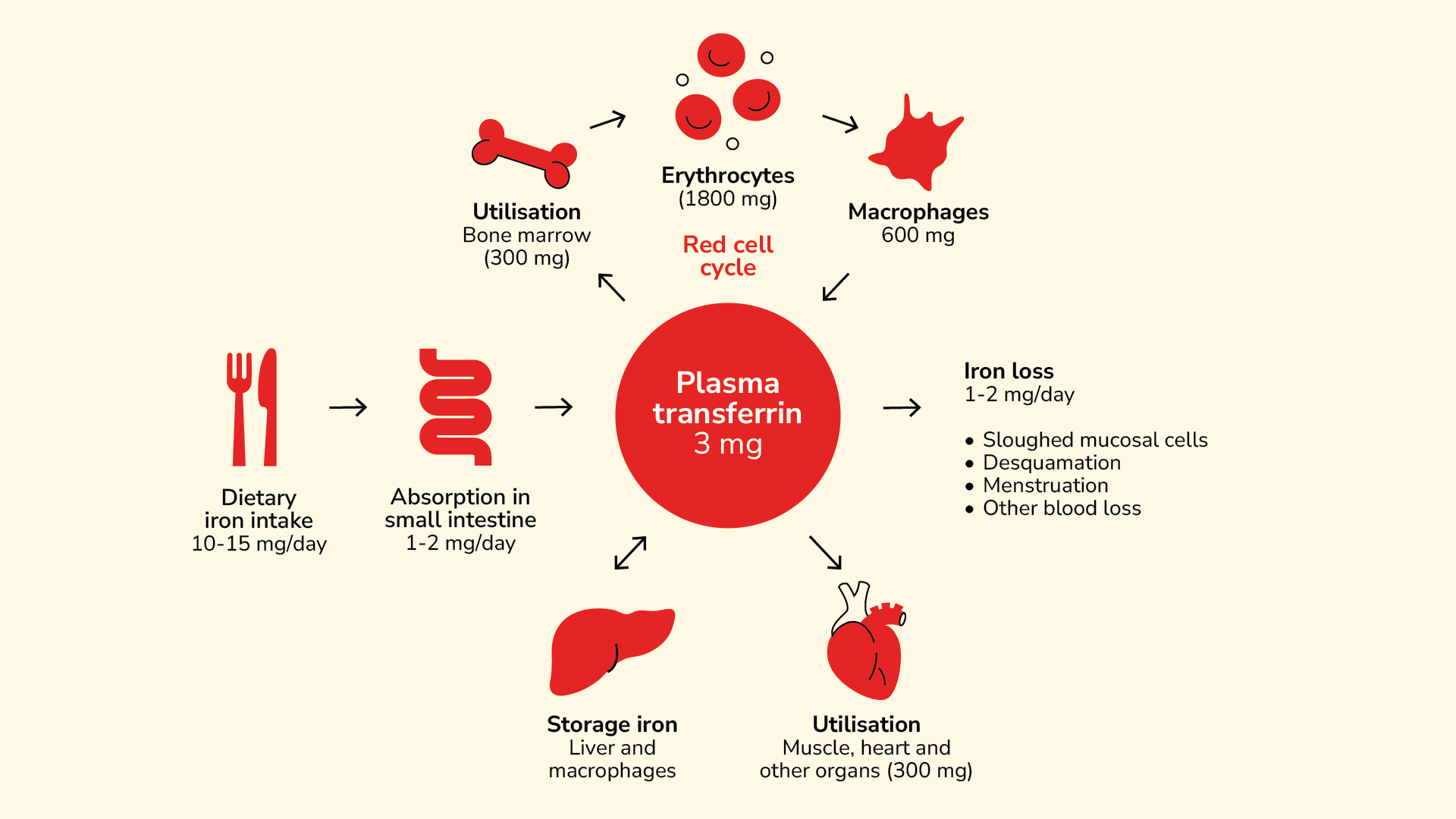Don’t have an account?
Select the donation type you’d like to make
Body iron stores
The body contains 2.5–4 g of iron, most of which is bound to haem within haemoglobin molecules of red blood cells (2,500 mg). Much of the remaining iron is contained in myoglobin (130 mg) and enzymes (150 mg). Excess iron is stored in the protein ferritin in the liver.
Average iron stores are:
- 5·7 mg/kg in premenopausal women,
- 7·8 mg/kg in postmenopausal women, and
- 9·7 mg/kg in men.
Iron metabolism
The human body obtains iron from the diet, absorbing approximately 1–2 mg a day from an average daily intake of 10–15 mg. The body also loses 1–2 mg per day in urine, sloughed skin cells, menstruation, etc. As the majority of the body’s iron is located in red blood cells it is recycled with their senescence.

Modified with permission from Greg Anderson, Queensland Institute of Medical Research, Australia, 2011.
Iron absorption
Iron absorption is influenced by a number of factors including:
- the amount of iron in the diet
- the form of iron (haem iron is more readily absorbed than non-haem)
- the presence of enhancers or inhibitors
- medications
- disease states affecting the gut, e.g. coeliac disease, surgery, and
- physiological limitations.
Non-haem iron is found in plants such as green leafy vegetables, wholegrain cereals, nuts and dried fruits. Only about 5% of non-haem iron is absorbed and this is strongly influenced by enhancing or inhibiting factors.
Haem iron is found in meat, fish and poultry products. It’s absorbed much more readily than non-haem iron – about 20% is absorbed. The best source of haem iron is red meat.
Enhancers
Foods which enhance the absorption of iron include those containing;
- vitamin C, e.g. broccoli, tomatoes, capsicum, oranges, berries, grapefruit and kiwi fruit, and
- organic acids, e.g. grapes, tomatoes, citrus fruits and pineapple.
Inhibitors
Foods which inhibit the absorption of iron include those containing:
- phytates, e.g. legumes, cereals, nuts, soy protein, cocoa and cola drinks
- polyphenols, e.g. red wine, coffee, tea, cocoa and smoked food
- oxalic acid, e.g. spinach, rhubarb, sweet potato, buck wheat, parsley, leeks and berries
- calcium e.g. dairy and soy products such as milk and cheese, and
- medications including proton pump inhibitors.

